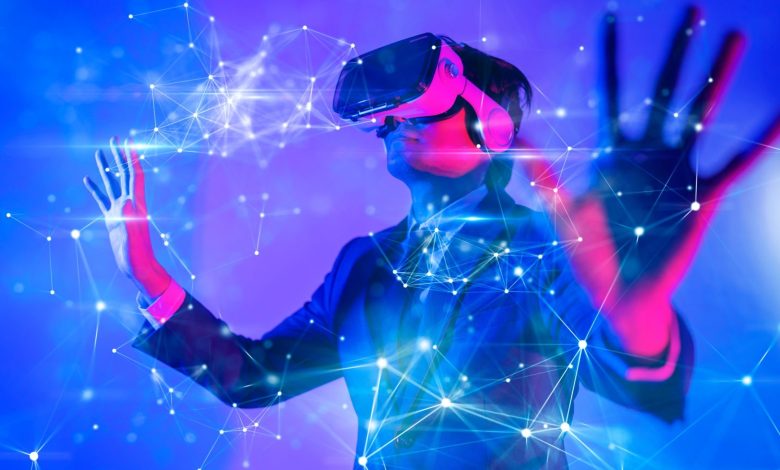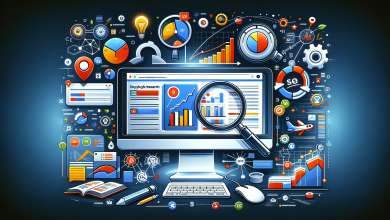How Metaverse Technology Will Change the Future?

Can The Metaverse Influence the Technological Future?
The tech industry’s main goal today is to structure digital elements in a way that simulates real-world experiences, resulting in the creation of cyberspaces – popularly known as the Metaverse – centered around virtual reality (VR) and augmented reality (AR). Companies like Meta and Microsoft have already made significant efforts in this direction.
While adoption of this new form of technology has been slow amongst end-users and investors, there has been an increase in mass interest and curiosity. Reports suggest that by 2026, 25% of the population will spend at least an hour every day on the Metaverse, and this will lead 30% of the world’s organizations to streamline their products and services to that platform. The possibilities are astounding! The real question is whether the concept of the Metaverse will redefine the technology landscape as we know it today.
The Metaverse has been suggested to have various utilities, including work opportunities, live performances, exhibitions of art, investment options, education, socialization, and gaming, among others. The goal is to replicate reality using an advanced and effective approach to managing our day-to-day activities.
What is exactly metaverse?
In 2021, Facebook rebranded to Meta with a focus on the metaverse, which Mark Zuckerberg aptly described as the embodiment of the internet. This concept is similar to that of Philip Rosedale, the creator of Second Life, who views the metaverse as a three-dimensional internet where users can interact through avatars.
Put simply, the metaverse is a virtual world that uses AR and VR technology to provide an immersive experience. Web 3.0 technologies like blockchain, cryptocurrency, AI, and ML can also be integrated for decentralization and privacy.
Metaverses, albeit in their early stages, have been in existence for over a decade. One example is the well-known multiplayer gaming platform Roblox, which launched in 2006. Initially, its usage was primarily for gaming and social networking. However, in recent times, the industry has broadened its scope to include workplaces, resulting in a new iteration known as the enterprise metaverse.
In 2021, the landscape has undergone significant changes, with more than half of the metaverse’s traffic being work-related. Platforms such as those offered by Microsoft and Meta enable users to collaborate on tasks and projects efficiently. Meanwhile, others are focusing on building the metaverse as a means of engaging customers.
Keep an Eye on These Leading Metaverse Platforms
Various ideas about the metaverse have been created and transformed into different products by major technology companies. Though some aspects of these products are similar, they serve different purposes. Some Examples-
Meta’s Horizon Worlds
Horizon Worlds represents the evolution of Meta’s previous social VR applications like Oculus Rooms and Oculus Venues. However, the former is the more recommended platform for the metaverse standard and is geared towards user-generated content (UCS). Through UCS platforms, users are empowered to share text or media content that can be interacted with by other users.
In late 2021, Facebook Horizon was renamed and now functions as a new social virtual world, complete with monetization and in-app purchases for creators to sell virtual items. To access Horizon Worlds, users require an Oculus Quest VR headset. Additionally, the company has introduced features for businesses to utilize the platform to conduct meetings and collaborate on projects.
Microsoft’s Mesh
Microsoft’s version of the metaverse is specifically designed for the enterprise sector, unlike Meta’s. The company has created a mixed-reality platform that enables collaboration, video conferencing, and immersive content sharing. This solution incorporates the use of HoloLens and Microsoft Mesh, enabling interaction via Holoportation and representational avatars.
Through Holoportation, users can interact with each other using lifelike holograms. For those with VR headsets, avatars can be used to participate. Additionally, users can project three-dimensional representations of physical objects or elements for a more enriching experience.
Nvidia’s Omniverse
Nvidia, a well-known manufacturer of GPUs and chips in the gaming industry, recently unveiled its own version of the metaverse called ‘Omniverse’. This platform falls into the enterprise metaverse category and is built on top of the open-source framework, Universal Scene Description. Originally developed by Pixar to share real-time 3-D graphics. Omniverse can now be utilized to create digital twins of physical products or environments.
At the Nvidia GTC event in September 2022, the company announced that BMW had already started using the Omniverse. This technology enables users to create virtual representations of tangible objects, which can then be manipulated to produce real outcomes.
The components that make up the Metaverse technology
There are various technologies utilized by companies to create their own metaverse, each with specialized functions. Despite the extensive list, a few fundamental elements remain constant. We will delve into these below.
-
AR and VR
To create an engaging and interactive experience, the incorporation of augmented reality (AR) and virtual reality (VR) technology is crucial. These technologies are frequently used in tandem to enhance the metaverse. By utilizing AR and VR, physical simulations can be added to the metaverse, allowing users to feel, hear, and communicate with a sense of presence regardless of distance.
However, it should be noted that AR merges real-life surroundings with digital elements, while VR immerses the user in an entirely different virtual realm.
-
Web 3.0
When utilizing technology, users tend to consider various aspects of data management. Web3, also called Web 3.0, is the highest version of the internet that emphasizes decentralization, privacy, security, and machine learning. It fosters the decentralization of the metaverse and empowers users to have complete control of their data.
Web3 incorporates cryptocurrencies and blockchain technology, which promote secure and unidentified transactions of digital assets. Nonetheless, with the metaverse gradually reshaping the internet, there is a growing concern regarding its complete ownership.
-
Artificial Intelligence
The widespread importance of AI is evident in automation, swift decision-making, and strategic planning. Additionally, AI is now being used to construct metaverses that provide an immersive experience.
Furthermore, AI can offer valuable insights into the scalability and necessary changes to features within the metaverse and improve the user experience.
-
3D Reconstruction
3D reconstruction is utilized to create a cross-sectional and spatial representation of an animated object using different computer graphics elements such as color and feature. Its significance has been witnessed in sectors like healthcare and real estate.
Similarly, in the metaverse, 3D reconstruction plays a crucial role in achieving an authentic graphical portrayal of physical space. Utilizing 3D and 4K HD imagery, developers can provide the metaverse with digital assets to develop a virtual twin.
-
Internet of Things (IoT)
The presence of IoT in technological operations is evident from start to finish, as it revolves around the interconnection of all things through a network. This system utilizes sensors as detection devices to gather data from the physical world, which is then converted into digital packets. These sensors possess unique identities and automatically send and receive data once connected to the Internet.
By integrating IoT seamlessly, it is possible to connect the metaverse with reality, which can lead to more effective data management and optimization, as well as the development of simulations.
The Metaverse Development Company: Paving the Way to the Future of Technology
The world of technology has been rapidly evolving over the years, from the use of simple telephones to the creation of sophisticated virtual reality platforms. One such innovation is the creation of the Metaverse, a virtual world where people can interact with each other and with digital objects in a more immersive manner than ever before. Metaverse development companies are at the forefront of this emerging technology.
The Metaverse is an interconnected system of virtual realities, where users can create their own avatars and navigate virtual worlds with ease. The goal of the Metaverse Development Company is to create a seamless and intuitive experience for users, by designing and building cutting-edge technology that enables this level of interaction.
The gaming industry is also set to benefit significantly from the Metaverse, with players being able to experience games in an entirely new way. The Metaverse allows for more significant interaction with other players, creating a more immersive and engaging gaming experience. Imagine playing a game where you can fully interact with other players, where teamwork and collaboration drive success. That is the future of gaming.
In conclusion, Metaverse development companies are at the forefront of a new era of technology, one that will transform the way we live, work and play. The potential applications are endless, and we are only beginning to scratch the surface of what is possible. Get ready to experience the Metaverse, a world where anything is possible.




